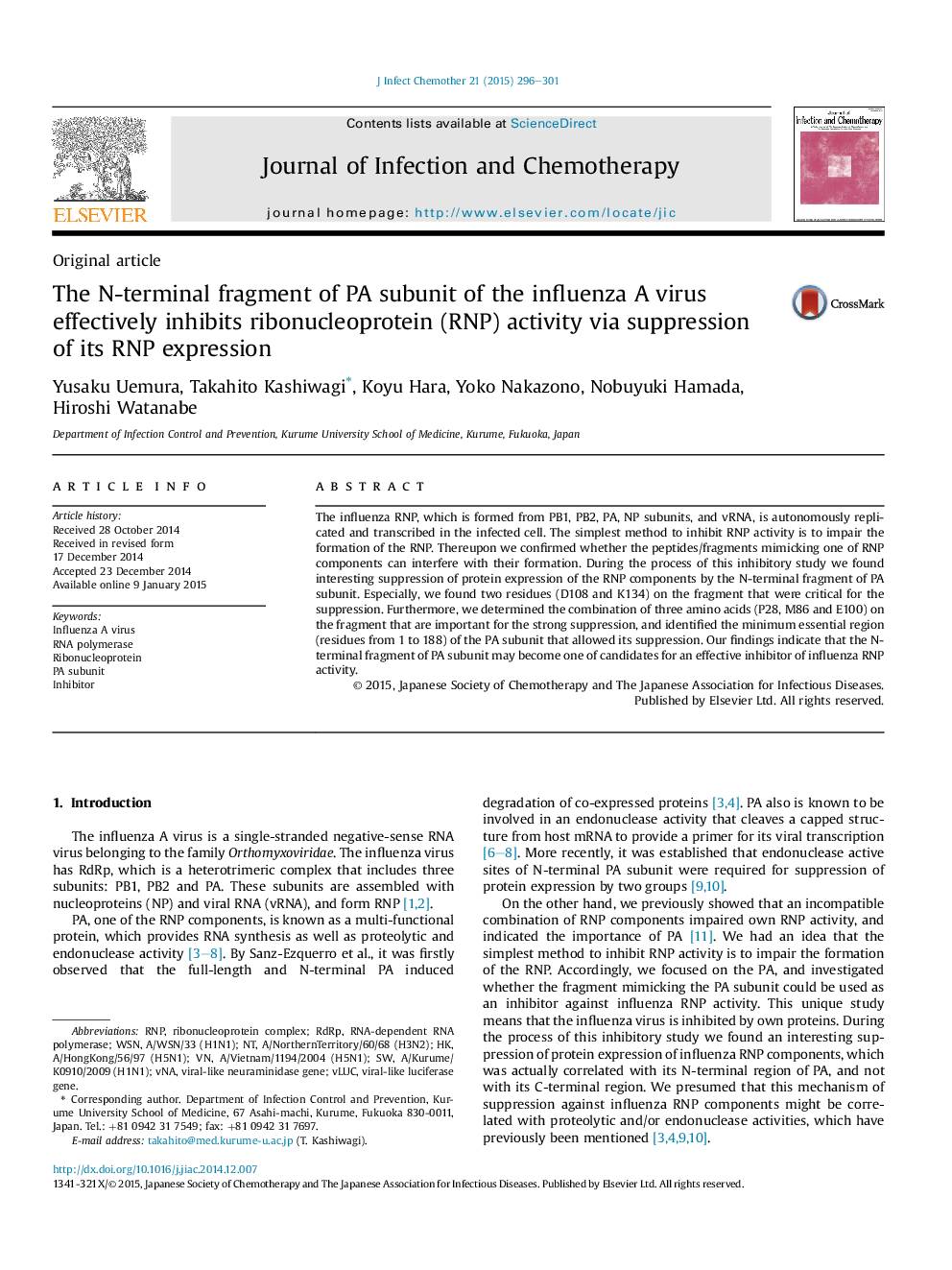| Article ID | Journal | Published Year | Pages | File Type |
|---|---|---|---|---|
| 3376882 | Journal of Infection and Chemotherapy | 2015 | 6 Pages |
The influenza RNP, which is formed from PB1, PB2, PA, NP subunits, and vRNA, is autonomously replicated and transcribed in the infected cell. The simplest method to inhibit RNP activity is to impair the formation of the RNP. Thereupon we confirmed whether the peptides/fragments mimicking one of RNP components can interfere with their formation. During the process of this inhibitory study we found interesting suppression of protein expression of the RNP components by the N-terminal fragment of PA subunit. Especially, we found two residues (D108 and K134) on the fragment that were critical for the suppression. Furthermore, we determined the combination of three amino acids (P28, M86 and E100) on the fragment that are important for the strong suppression, and identified the minimum essential region (residues from 1 to 188) of the PA subunit that allowed its suppression. Our findings indicate that the N-terminal fragment of PA subunit may become one of candidates for an effective inhibitor of influenza RNP activity.
